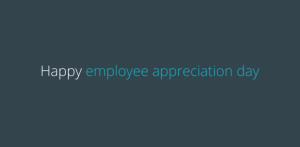September 12, 2016

Another Labor Day in the United States has come and gone. The holiday was first observed in 1882 as a way of honoring the booming labor movement, a paragon to the rest of the world and a sign of America’s future power. These days, Labor Day has come to represent the summer’s final hurrah instead of recognizing the contributions of our talent. Skilled workers are imperative to the success of any enterprise. Yet when many companies discuss investing in the future, they’re talking about stock purchases rather that cultivating a robust, high-performing and competitive workforce. Studies have shown that businesses committed to developing and investing in talent regularly outpace their competition. With the continuing growth of contingent workforce programs, engaging and retaining exceptional workers for critical projects is imperative. Let’s look at how contingent workforce leaders can help companies reinvest in their own success by investing in talent.
Putting More Stock in Talent Than in Shares
Investing in a company’s future should encompass a lot more than contemplating the inflation of stock prices. Last February, for example, companies spent a record amount of capital on buying back their own stock to bolster share prices. According to figures posted in the Standard & Poor’s 500 index, these organizations dumped $ 10.4 billion into stock buybacks, which is the highest expenditure since data monitoring began in 1995. Even though buyback activity subsided this year, we’re still seeing a 15.1 percent increase year over year.
The problem is that these kinds of buybacks do nothing to strengthen company productivity or improve performance. To refer to these actions as “investments” requires a narrow view of the term. Little, if any, of that revenue actually goes to what most of us would consider reinvesting in a company. If some of the nation’s retail giants devoted the same cash to reinvesting in their talent as they do repurchasing stock, they could give every worker an additional $ 25,000 per year in wages. That’s not to say all the money should go to pay hikes. As we learned from the Gravity Payments debacle, in which the CEO gave all employees a $ 70,000 minimum salary, uniform pay isn’t necessarily equitable or welcome.
Reinvesting in a company and its talent goes beyond compensation. A global study performed by Oxford Economics and SAP proved that the highest performing organizations leverage talent to fuel profits and business growth. And many of the approaches cited are the best practices championed by contingent workforce program leaders and their staffing partners.
Strategy Is Set at the C-Suite
Organizations that demonstrate the greatest levels of performance are those that make workforce issues a top priority by improving talent, their working conditions, overall health and wellbeing, and the prevailing business culture. The movement starts at the highest echelons of management and infuses every other aspect of the company. In high-growth, high-performing businesses, researchers found that workforce decisions became the focal points for strategic business drivers, and they were made at executive or board levels. Underperformers, on the other hand, brushed aside workforce initiatives as an afterthought in context of near-term business plans. Like buying back stock.
With a traditional workforce, hiring managers and HR leaders often find themselves time-strapped, stretched thin across competing priorities, and forced to respond to urgent issues as they arise. This leaves little room for them to focus on strategizing near-term and long-term plans. A managed contingent workforce program, meanwhile, has an inherent advantage. While hiring managers, procurement professionals and HR folks may identify the need, the decision to engage comes from company leadership. So by its very nature, an outsourced contingent labor program already captures the attention of executive decision makers. More importantly, these providers bring a wealth of wisdom, experience, resources and tools for consultatively developing ongoing workforce strategies.
This eases the burden of planning for the board or C-level officers. Contingent workforce program and staffing leaders collaborate closely with these executives to launch recruiting strategies, needs assessments, forecasting, implementation plans, issue resolution initiatives, training and development efforts, on- and off-boarding, succession planning, supplier management and rationalization, cost containment protocols, progressive strategies for the evolution of the program, and more.
Talent Is the Priority
According to the findings in the Oxford Economics and SAP study, high-performing companies invest in training, mentoring and developing their talent — they’re 16 percent more likely to offer a formal mentoring program than underperforming businesses.
New generations of talent want access to mentoring, formal training and on-the-job learning. They seek satisfaction and personal fulfillment — not simply money. They want a job that improves their experiences, personally and professionally. Their flexibility and willingness to learn inspire positive attitudes that boost morale, while presenting a clean canvas on which to project the skills that hiring managers are hoping to develop in their workforces.
Contingent workforce program leaders — whether MSPs or staffing providers — are participants in the conversation, not directors or lecturers. They not only demonstrate their commitment and support, they position themselves to gain fresh perspectives that could lead to new innovations, more efficient methods, continuous improvements and more. They also discover the unique attributes, skills and characteristics of their people, which can inform more strategic placement decisions for current and future assignments.
MSPs and their staffing partners have the time and focus. They listen to workers and provide feedback about performance, areas for improvement and steps for ongoing development. Many also offer mentoring from qualified internal coaches with related skills and experiences. This is a practice that translates especially well to onboarding. Bringing in peers with experience at the client organization creates a safe and supportive coaching outlet where new talent can ask questions upfront, without worrying about the reception.
High-Quality Talent Outperforms Low-Cost Talent
The Oxford Economics and SAP report determined that the companies with the highest profit margins and superior performance were those that concentrated on attracting the best talent — not the cheapest available candidates. This is the forte of contingent workforce program leaders. They continually court, assess and assemble the most elite teams of staffing providers to ensure the placement of optimal talent, matched to each client’s objectives, mission and business culture. Their staffing curators have a prowess for cultivating diverse talent, utilizing emerging online marketplaces, developing employment brands, and connecting talent to ideally matched business environments.
Contingent workforce program experts partner with hiring managers to gain a comprehensive understanding of each worker’s role: how it relates to the client’s mission, how it fits the employment culture, how it shapes sourcing initiatives and how it will encourage the right candidates to apply.
Experienced staffing professionals know their audience — their clients and their potential talent. Their online and offline sources are as diverse as the talent pools they develop, built from a combination of job boards, social media, online marketplaces, career fairs, associations, professional directories, colleges, special interest groups and more.
Performance Over Longevity
Research shows that 60 percent of top companies are motivated by merit over tenure. If you consider some of the most lauded businesses in the world, such as Google and Apple, you’ll notice that the average tenure is about a year. Nonetheless, the exceptional quality of their talent is undeniable. With the rise in contingent work, driven by the success of the gig economy, project- and assignment-based work is rapidly becoming a new standard. Longevity holds less sway with companies seeking innovation and growth — they need the best workers, not just those willing to stay.
Outsourced contingent workforce leaders greatly increase the chances of finding superior talent because they have influence in the program and the ears of hiring managers who want the best people — not necessarily the lowest rate. Successful MSPs, for example, expose their supplier partners to all aspects of the client program: the pain-points, challenges, risks, threats, strengths, weaknesses and opportunities. This enables greater visibility into needed job categories and skill sets, costs, compliance and specific customer requirements. It also dramatically improves the odds of identifying the highest performers for the organization’s goals.
Contingent workforce experts also have access to advanced analytics and business intelligence through the VMS systems they use. Research demonstrates that these technologies improve all mission-critical KPIs:
- Time to hire
- Cost per hire
- Employee retention
- Completed employee trainings
- Employee productivity
- Employee diversity
- Competitive compensation
- Competitive benefits
Contingent Workforce Programs: An Investment in Talent
It’s well established that companies such as Costco, Nordstrom, Zappos, Lego, and others outperform their rivals, even when their competitors pay higher wages. And it’s because they’re making real investments in the workforce — providing talent with new experiences, skills, development opportunities and incentives that enhance their quality of life and productivity. Paul Zak, a neuroscience researcher, found that employees who have trust in their organization and see a higher purpose to their work experience more joy. Happy employees are more productive, more innovative and contribute more to a healthy bottom line.
It’s difficult in this fast-paced, fluctuating business environment for stakeholders to prioritize workforce issues while upholding their own commitments to the organization. For contingent workforce program leaders, however, ensuring a productive and nurtured group of exemplary talent is their core mission. Let’s truly honor the spirit of Labor Day this year by reinvesting in our workers. It’s an investment in the future of your company that will pay dividends.
Business & Finance Articles on Business 2 Community(90)






